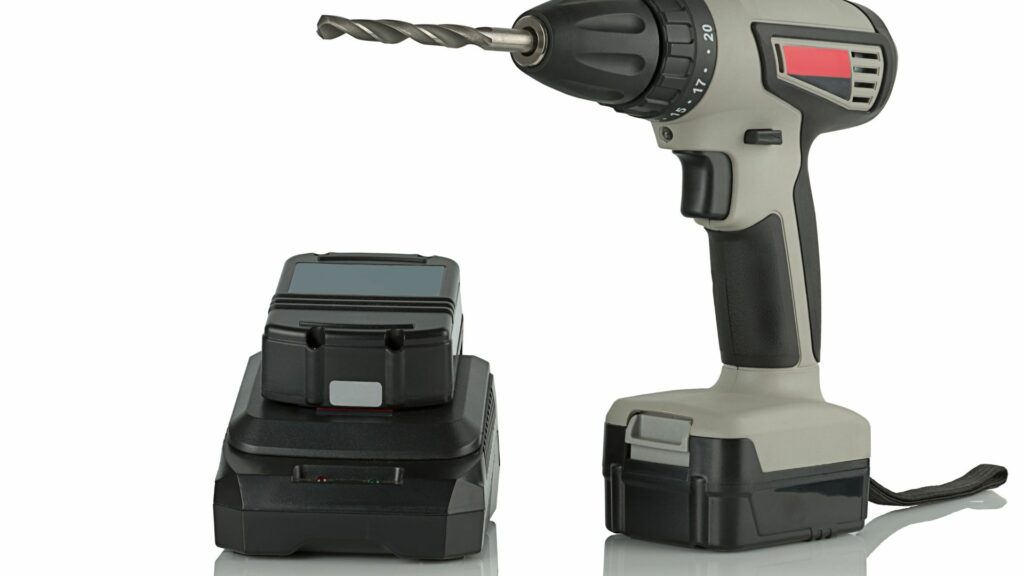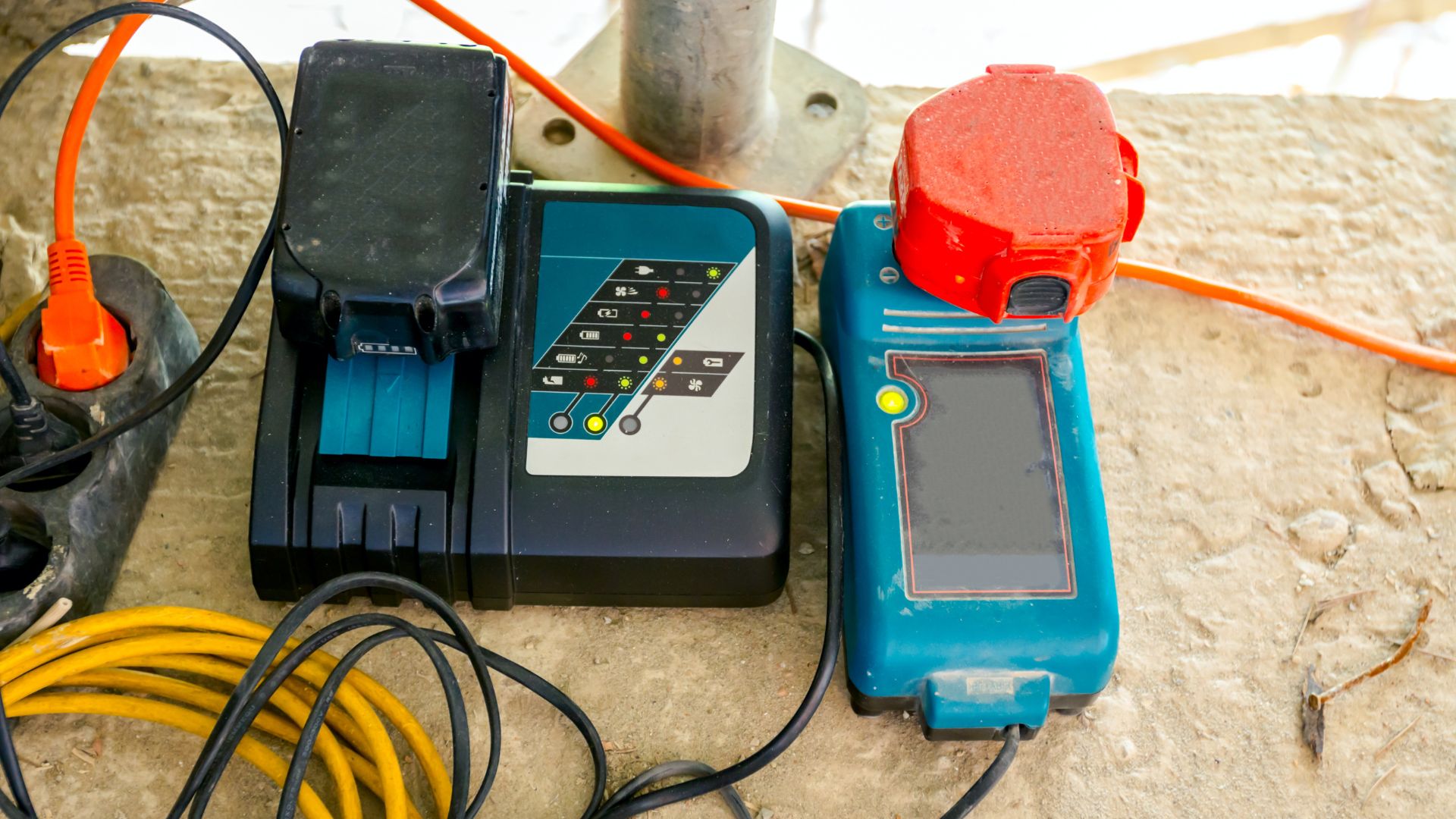Higher amps translate into a shorter charging time. But what does that tell you about the battery charger’s amp draw? The guide below has the answers.
How Many Amps Does A Battery Charger Draw?
| Tool Charger | Amp Draw |
| MAKITA | 3A |
| MILWAUKEE | 13.5A |
| RYOBI | 12A |
| DEWALT | 6A |
Most people underestimate the complexity of a charger. That is not surprising. After all, these devices have simplistic operations. You use a charger by plugging one end of a cord into a battery and the other end into a wall outlet.
But you can’t determine a charger’s amp draw without looking at the inner workings of the device. Consider the following:
1). Choosing A Charger
Understanding the way consumers select chargers allows you to pinpoint the most important attributes of the device:
- Type – Battery chargers are not all the same. Different charger types perform different roles. You should match the charger type to the purpose you have in mind.
- Size – Manufacturers use amp hours to represent a battery’s capacity. The amp hours will show you the time it takes a particular charger to fill a battery. This makes the amp hours the most important consideration for anyone looking to select a charger.
- Goal – What is your objective? Are you trying to charge a flat battery to completion? Or do you want to maintain a battery’s charge over a long period? The purpose will influence the battery type.
2). Charger Type
You have three types of batteries to consider. Your choice depends on the purpose you have in mind:
- Manual
Manual chargers are exactly what they sound like. They don’t rely on sophisticated features to transmit electricity. Instead, they will pour the same amount of charge into every battery they encounter.
The charge level in the battery doesn’t matter. You can’t expect these devices to deactivate automatically. The manufacturers expect you to rely on hydrometers, voltmeters, and ammeters to determine whether or not the battery is full.
- Automatic
This option is the most convenient of the bunch because it stops charging once the battery fills. But that doesn’t mean it stops working. An automatic battery will enter float mode, which uses small amounts of electricity to prevent the voltage from falling below a specific level.
Automatic chargers are safer. They are less likely to harm the battery, even when you select a charger with a significantly higher voltage and amperage.
- Trickle
You don’t have to unplug trickle chargers. These devices are similar to float chargers, even though they can’t track the charge in a battery. In other words, you can’t trust them to shut down once the battery is full.
They will continue to pull power from the wall outlet to charge the battery until you disconnect them.
3). Amp Hour
Pay attention to the amp hours. They will show you the battery’s capacity, which, in turn, reveals how long it takes the battery to charge. The term ‘Amp Hour’ tells you everything you need to know.
You’re looking at the number of amps transmitting per hour. For instance, a 36 amp-hour battery can deliver one amp for 36 hours and six amps for six hours. Once you know the charger’s amperage, you can estimate the charging duration.
For instance, a 2A charger will fill a 48-amp battery in 24 hours. Chargers with a higher amperage will charge the battery in a shorter period. For instance, a 12A charger will charge a 48A battery in four hours.
4). Specs
A battery charger’s specs are vital. Most consumers understand the basics. They are familiar with the following attributes:
- Amps – This is the current flowing into a battery. You can also define it as the strength of an electrical current. The more amps a charger can transmit, the faster the battery will fill.
- Voltage – This refers to the amount of work it takes to move a current. Think of it as the pressure pushing the electricity through a medium.
- Watts – This is the rate of energy transfer. In a way, amps and watts are interchangeable. They don’t mean the same things. However, you can use either option to get a better understanding of a charger’s input and output.
But beyond these variables, Horizon Hobby expects a charger’s label to reveal the battery chemistry, connector type, and any additional features the charger offers. The charger chemistry matters because it shows you the type of battery the charger can accommodate.
The charger’s specs matter because they will tell you the number of amps a charger draws. Ignore the output section. ‘Output’ is the current the charger sends to the battery. This is the variable manufacturers emphasize because it tells you the charging duration.
Look at the ‘Input’ if you want to know the charger’s amp draw. Interestingly, the charger’s amp draw exceeds the output. In other words, a charger pulls more energy from the power supply than it delivers.
How To Calculate The Battery Charger Amp Draw?

You don’t calculate the amp draw. The battery charger tells you this information. Just check the label on the charger or the manual.
This information is not an accurate representation of the charger’s amp draw. For instance, a charger with an input of 20 watts won’t necessarily use 20 watts. 20W is the maximum amount it can draw. That doesn’t happen every time.
Conserve-Energy-Future suggests taking the output into account to determine the charger’s amp draw. They estimate that chargers have an efficiency of 50 percent; that is to say, the device provides 0.5 watts for every watt it pulls out of the outlet.
In other words, a charger with a 5W output pulls 10 watts out of the wall outlet. Dividing those 10 watts by the voltage will give you the amp draw. Naturally, these calculations will change depending on your battery’s efficiency and voltage.
JOTEO has a tool that calculates a cordless drill charger’s power consumption. You must provide the hours of usage per day and the power in watts.
Why Is It Necessary To Know The Amp Draw of the Battery Charger?
The primary purpose of the amp draw is to tell you whether or not the charger is compatible with your battery. Many people use the amp draw to determine the charging duration, which makes sense.
Most consumers want the fastest chargers money can buy. That means selecting products with higher amperage. A higher amperage promises faster-charging speeds. A 10A charger will fill your battery at a faster rate than a 2A charger.
However, are fast chargers safe? I want you to pay attention to the temperature while charging a battery. Chargers with a higher amperage can easily overwhelm the battery, causing overheating and lowering the lifespan of the battery.
But chargers with lower amps are not necessarily the answer, especially where batteries in powerful devices are concerned. A weak charger can also lead to disaster because the charger must work harder to meet the demands of the battery. In this case, the charger will overheat, and its lifespan will suffer.
The key is to find a balance. The amps shouldn’t be so high that they overwhelm the battery or so low that they overwork the charger. You can only make these decisions once you know the amp draw.

